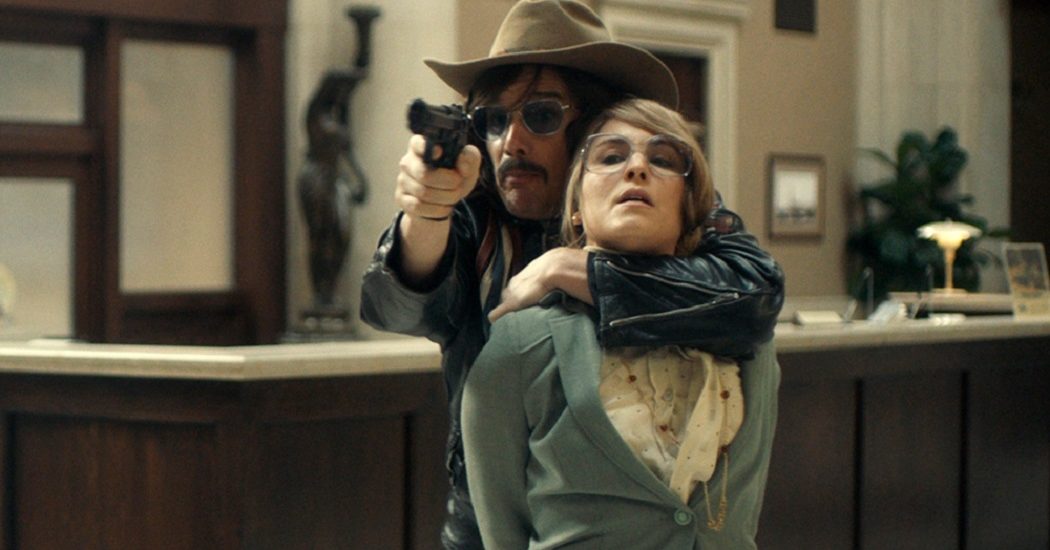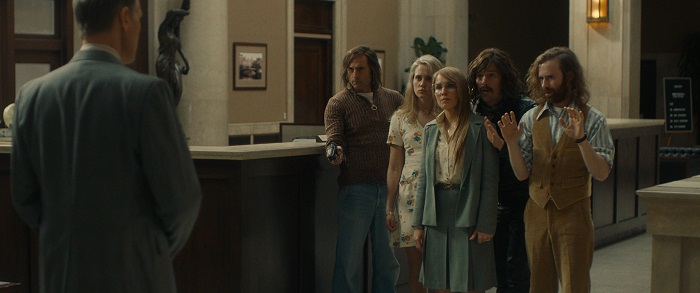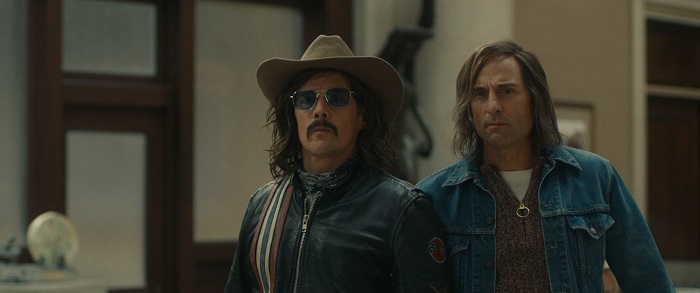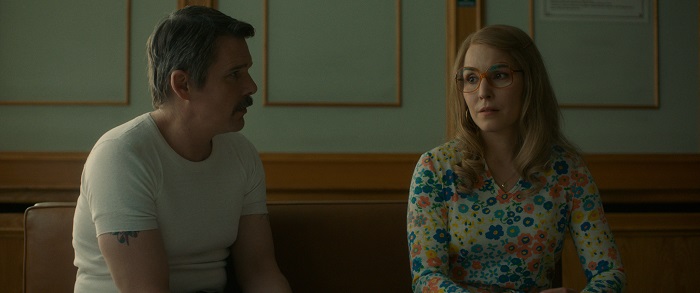
Stockholm Review
Stockholm is the (kind of) true story behind the concept of Stockholm Syndrome.

Release Date: April 26, 2019
MPAA Rating: R
Based on the absurd but true 1973 bank heist and hostage crisis in Stockholm that was documented in the New Yorker as the origins of the Stockholm Syndrome.
Director: Robert Budreau
Screenwriter: Robert Budreau
Producers: Jonathan Bronfman, Robert Budreau, Nicholas Tabarrok, Fredrik Zander
Cast: Ethan Hawke (Kaj Hansson/Lars Nystrom), Mark Strong (Gunnar Sorensson), Noomi Rapace (Bianca Lind), Bea Santos (Klara Mardh), Christopher Heyerdahl (Chief Mattsson), Shanti Roney (Olof Palme), John Ralston (Detective Jackobsson), Ian Matthews (Detective Vinter), Mark Rendall (Elov Eriksson)
Editor: Richard Comeau
Cinematographer: Brendan Steacy
Production Designer: Aidan Leroux
Casting Directors: John Buchan. Jason Knight
Music Score: Steve London
Most people are familiar with the term Stockholm Syndrome, but how many of those people know where that term originated? The phenomenon of hostages psychologically bonding with their captors got its name from an actual situation that occurred in 1973. And now, writer/director Robert Budreau (Born to Be Blue) has made a movie about it called, simply enough, Stockholm.

Set in the Swedish city for which it is named, Stockholm is about a Swedish-born/American-bred ex-con named Lars Nystrom (Ethan Hawke from First Reformed and The Purge) who bursts into a bank and waves a machine gun around demanding money. But money is not Lars’ only reason for robbing the bank. When one of the employees named Bianca (Noomi Rapace from Prometheus) trips the silent alarm, Lars is pleased, as his ulterior motive is for the cops to bring his old prison buddy, Gunnar (Mark Strong from Shazam!), in as a negotiator.
So, Lars takes Bianca and another gal named Klara (Bea Santos from “True Detective”) hostage, and when Gunnar arrives, the four hole themselves up in the bank vault and demand a car to escape. As the situation becomes more tense, Bianca finds herself trusting Lars instead of the police, to the point where she even helps him plan his and Gunnar’s getaway.
Like a title card says at the beginning of the movie, Stockholm is “based on an absurd but true story.” The names have been changed, as have some of the circumstances, but the basic skeleton of what is known about the actual event remains intact in the film. Which is probably why Budreau chose to make his movie a black comedy; there really is no other way to tell a story this ludicrous. The narrative style is sort of like the Coen Brothers-meets-Ben Wheatley, and that half-slapstick crime drama methodology works.

In the middle of it all is Ethan Hawke. He anchors the film as the bumbling-yet-dangerous criminal. Noomi Rapace is a great foil/accomplice to him as well, embodying the whole Stockholm Syndrome concept by eventually putting more trust in her captor than she does in the police who are trying to rescue her. At one point in the film, the cops are caught in a lie, and that’s when the hostages start to really sympathize with their kidnappers. The supposed heroes become the villains, and the original villains become anti-heroes. And, with Rapace as his sounding board, Hawke embraces the role reversal perfectly.
The seventies setting goes right along with the dark humor aspect of the movie. Everything about the movie screams 1973, but not in a silly, exploitative way like The Wedding Singer. More like in a purely authentic way, like Boogie Nights. The costuming, the facial hair, even the music (mostly period Bob Dylan from the late sixties/early seventies) has that retro style that keeps the era in the front of the viewer’s mind without drawing too much attention to itself. The seventies nostalgia factor is campy enough without calling itself out at every turn. Hawke’s cowboy hat and Rapace’s oversized glasses just add another layer of subtle humor to an already ridiculous situation.

It’s hard to say how historically accurate Stockholm is, since the case is so bizarre, and it’s hard to know what really went on while the robbers and hostages were locked away in the vault alone for days. But Robert Budreau puts forth a version of events that is as plausible as any theory. And it’s a hell of a lot of fun to watch.


